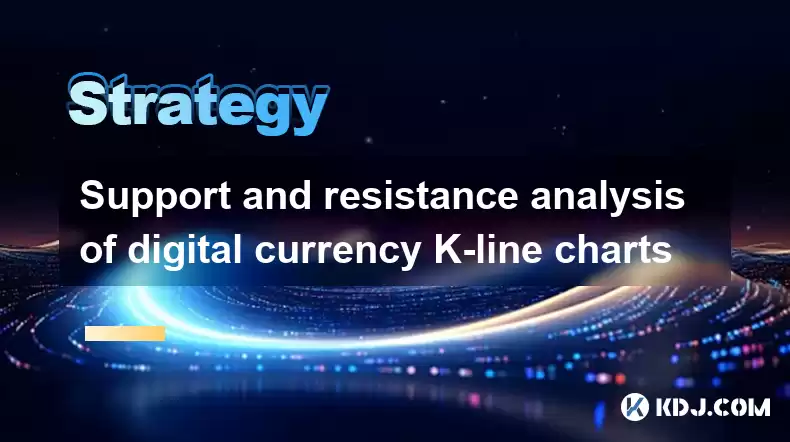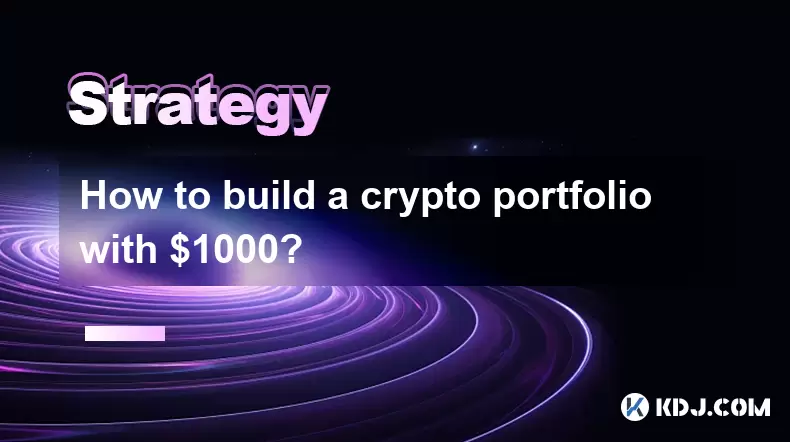-
 Bitcoin
Bitcoin $117300
1.99% -
 Ethereum
Ethereum $3884
5.89% -
 XRP
XRP $3.268
9.33% -
 Tether USDt
Tether USDt $1.000
0.02% -
 BNB
BNB $783.0
1.78% -
 Solana
Solana $173.6
3.51% -
 USDC
USDC $0.9999
0.00% -
 Dogecoin
Dogecoin $0.2193
7.00% -
 TRON
TRON $0.3380
0.30% -
 Cardano
Cardano $0.7769
5.08% -
 Stellar
Stellar $0.4350
9.36% -
 Hyperliquid
Hyperliquid $40.23
5.78% -
 Sui
Sui $3.739
6.95% -
 Chainlink
Chainlink $18.30
9.46% -
 Bitcoin Cash
Bitcoin Cash $581.7
2.11% -
 Hedera
Hedera $0.2577
5.51% -
 Ethena USDe
Ethena USDe $1.001
0.00% -
 Avalanche
Avalanche $23.08
4.23% -
 Litecoin
Litecoin $121.7
2.24% -
 UNUS SED LEO
UNUS SED LEO $8.962
-0.34% -
 Toncoin
Toncoin $3.332
1.36% -
 Shiba Inu
Shiba Inu $0.00001273
3.39% -
 Uniswap
Uniswap $10.35
6.84% -
 Polkadot
Polkadot $3.818
4.01% -
 Dai
Dai $1.000
0.01% -
 Bitget Token
Bitget Token $4.446
2.13% -
 Cronos
Cronos $0.1491
4.96% -
 Monero
Monero $255.4
-9.78% -
 Pepe
Pepe $0.00001099
4.80% -
 Aave
Aave $284.0
8.01%
Support and resistance analysis of digital currency K-line charts
Support and resistance levels on K-line charts help predict price movements; buying near support and selling near resistance are common strategies.
Apr 06, 2025 at 05:00 am

Understanding Support and Resistance Levels
Support and resistance levels are crucial concepts in technical analysis applied to cryptocurrency K-line charts. Support represents a price level where buying pressure is strong enough to prevent further price declines. Traders anticipate that the price will "bounce" off this level. Conversely, resistance indicates a price level where selling pressure overwhelms buying pressure, hindering further price increases. Identifying these levels helps predict potential price movements.
Identifying Support and Resistance on K-Line Charts
Pinpointing support and resistance levels requires careful observation of the K-line chart. Look for price areas where the price has previously bounced or stalled. Previous lows often act as support, while previous highs frequently serve as resistance. The more times a price level has acted as support or resistance, the stronger it is considered to be. Consider using trendlines to connect these points for clearer visualization.
Types of Support and Resistance
Support and resistance aren't always just single price points. They can manifest in several forms. Horizontal support/resistance is the simplest form, represented by a horizontal line. Trendline support/resistance connects a series of swing lows or highs, respectively, indicating the overall trend direction. Support/resistance zones are areas rather than single points, representing a range of prices where support or resistance is likely to be encountered.
Using Support and Resistance for Trading Strategies
Once identified, support and resistance levels can inform various trading strategies. A common strategy involves buying near support levels, anticipating a price bounce, and selling near resistance levels, anticipating a price reversal. Breakouts – where the price decisively breaks through support or resistance – can signal significant price movements. However, false breakouts are also common, highlighting the importance of risk management.
Combining Support and Resistance with Other Indicators
Support and resistance analysis is most effective when combined with other technical indicators. For example, using moving averages to confirm the trend direction can enhance the accuracy of support and resistance predictions. Volume analysis can also provide insights into the strength of support and resistance levels. High volume near support or resistance often suggests strong conviction behind the price action.
Step-by-Step Guide to Identifying Support and Resistance
Here's a step-by-step guide to identifying support and resistance on a cryptocurrency K-line chart:
- Step 1: Examine the K-line chart for previous price highs and lows.
- Step 2: Identify areas where the price has repeatedly bounced or stalled.
- Step 3: Draw horizontal lines across these areas to represent support and resistance levels.
- Step 4: Consider connecting swing highs and lows with trendlines to identify dynamic support and resistance.
- Step 5: Observe the volume associated with these levels to gauge their strength.
- Step 6: Use other technical indicators to confirm your analysis.
Understanding Breakouts and False Breakouts
Breakouts occur when the price decisively moves beyond a support or resistance level. This often signals a continuation of the prevailing trend or a potential trend reversal. However, false breakouts are equally common. These occur when the price briefly breaks through a support or resistance level but then quickly reverses, trapping traders who entered positions based on the breakout. Careful observation and risk management are crucial.
Dynamic vs. Static Support and Resistance
Static support and resistance are represented by horizontal lines, indicating fixed price levels. Dynamic support and resistance, on the other hand, are represented by trendlines, constantly shifting as the price moves. Understanding the difference is crucial for accurate analysis. Static levels are generally considered stronger, while dynamic levels are more adaptable to changing market conditions.
The Importance of Context in Support and Resistance Analysis
Remember that support and resistance levels are not absolute. Their effectiveness depends heavily on the context of the broader market. Consider the overall market trend, the specific cryptocurrency's volatility, and news events that might impact price. Analyzing the chart in isolation can lead to inaccurate predictions.
Risk Management and Support/Resistance Trading
Trading based on support and resistance requires careful risk management. Never risk more capital than you can afford to lose. Use stop-loss orders to limit potential losses if the price moves against your prediction. Consider diversifying your portfolio to mitigate risk further.
Frequently Asked Questions
Q: What is the difference between support and resistance?
A: Support is a price level where buying pressure is strong enough to prevent further price declines, while resistance is a price level where selling pressure prevents further price increases.
Q: How reliable is support and resistance analysis?
A: Support and resistance analysis is a valuable tool, but it's not foolproof. False breakouts are common, and the effectiveness of these levels depends on market context and other factors.
Q: Can I use support and resistance analysis with any cryptocurrency?
A: Yes, support and resistance analysis can be applied to any cryptocurrency's K-line chart. However, the reliability of the analysis may vary depending on the cryptocurrency's volatility and liquidity.
Q: What are some common mistakes to avoid when using support and resistance?
A: Common mistakes include relying solely on support and resistance without considering other indicators, ignoring market context, and neglecting proper risk management.
Q: How can I improve my accuracy in identifying support and resistance levels?
A: Practice is key. Study various K-line charts, experiment with different techniques, and combine support and resistance analysis with other technical indicators. Consider backtesting your strategies.
Q: Are support and resistance levels always perfectly horizontal lines?
A: No, support and resistance can be represented by horizontal lines (static), trendlines (dynamic), or even price zones. The form depends on the price action.
Q: What happens when the price breaks through a strong support level?
A: A strong support level breakout often signals a significant price decline, potentially indicating a bearish trend reversal. However, it's crucial to confirm this with other indicators.
Q: What happens when the price breaks through a strong resistance level?
A: A strong resistance level breakout often signals a significant price increase, potentially indicating a bullish trend reversal. Again, confirmation with other indicators is recommended.
Q: Can I use support and resistance analysis alone for trading decisions?
A: While support and resistance are valuable tools, it's risky to rely solely on them for trading decisions. Combining them with other technical indicators and fundamental analysis is a more robust approach.
Disclaimer:info@kdj.com
The information provided is not trading advice. kdj.com does not assume any responsibility for any investments made based on the information provided in this article. Cryptocurrencies are highly volatile and it is highly recommended that you invest with caution after thorough research!
If you believe that the content used on this website infringes your copyright, please contact us immediately (info@kdj.com) and we will delete it promptly.
- Cold Wallet Crypto in 2025: The Future is Now, Ya'll
- 2025-08-08 05:10:13
- MAGACOIN, SOL, and ADA: A Tale of Shifting Tides in Crypto
- 2025-08-08 05:10:13
- SHIB Price, PEPE, and the Memecoin Supercycle: Who Will Reign Supreme?
- 2025-08-08 05:50:12
- Pudgy Penguins Price Prediction: Google Trends & Breakout Signals
- 2025-08-08 05:50:12
- UAE Crypto Regulation: SCA and VARA Unite to Streamline the Future of Digital Assets
- 2025-08-08 05:55:48
- MAGACOIN Finance: The Presale Phenomenon Rocking the Crypto World
- 2025-08-08 05:55:48
Related knowledge

How to avoid common crypto investment mistakes?
Jul 13,2025 at 01:35am
Understanding the Risks of Crypto InvestmentInvesting in cryptocurrency can be highly rewarding, but it also comes with significant risks. One of the ...

What is a long-short crypto strategy?
Jul 15,2025 at 10:56am
Understanding the Basics of a Long-Short Crypto StrategyA long-short crypto strategy is an investment approach where traders simultaneously take long ...

What is a long-short crypto strategy?
Jul 11,2025 at 01:28pm
Understanding the Basics of Long-Short Crypto StrategyA long-short crypto strategy is an investment approach where traders take both long and short po...

How to use the RSI indicator for crypto?
Jul 12,2025 at 03:56pm
Understanding the RSI Indicator in Cryptocurrency TradingThe Relative Strength Index (RSI) is a momentum oscillator used to measure the speed and chan...

Is copy trading a good strategy for crypto beginners?
Jul 12,2025 at 08:28am
Understanding Copy Trading in the Cryptocurrency MarketCopy trading is a strategy where novice traders replicate the trades of experienced investors a...

How to build a crypto portfolio with $1000?
Jul 13,2025 at 08:14pm
Understanding the Basics of Cryptocurrency InvestmentBuilding a crypto portfolio with $1000 starts with understanding the fundamentals of cryptocurren...

How to avoid common crypto investment mistakes?
Jul 13,2025 at 01:35am
Understanding the Risks of Crypto InvestmentInvesting in cryptocurrency can be highly rewarding, but it also comes with significant risks. One of the ...

What is a long-short crypto strategy?
Jul 15,2025 at 10:56am
Understanding the Basics of a Long-Short Crypto StrategyA long-short crypto strategy is an investment approach where traders simultaneously take long ...

What is a long-short crypto strategy?
Jul 11,2025 at 01:28pm
Understanding the Basics of Long-Short Crypto StrategyA long-short crypto strategy is an investment approach where traders take both long and short po...

How to use the RSI indicator for crypto?
Jul 12,2025 at 03:56pm
Understanding the RSI Indicator in Cryptocurrency TradingThe Relative Strength Index (RSI) is a momentum oscillator used to measure the speed and chan...

Is copy trading a good strategy for crypto beginners?
Jul 12,2025 at 08:28am
Understanding Copy Trading in the Cryptocurrency MarketCopy trading is a strategy where novice traders replicate the trades of experienced investors a...

How to build a crypto portfolio with $1000?
Jul 13,2025 at 08:14pm
Understanding the Basics of Cryptocurrency InvestmentBuilding a crypto portfolio with $1000 starts with understanding the fundamentals of cryptocurren...
See all articles

























































































